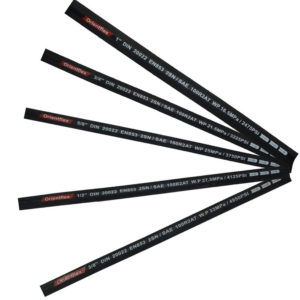Whether it is a common concrete transport truck today or a road roller excavator used for road construction, it is inseparable from rubber hydraulic hoses. It is not uncommon to see problems such as seepage, cracking, cracking, and loosening during use. Among them, the fault caused by the outer rubber layer is the most common. Let us introduce the cause of the rubber layer failure.

(1) The temperature is low, the temperature of the cold object is drastically lowered, and the hydraulic hose is no exception. If the hose is cracked, the hose will be bent. If there is a crack on the outside of the hose, pay attention to the crack in the hose and decide whether to replace the hose immediately.
(2) Bubbling appears on the outside of the hose. Bubbling on the outside of the hose is due to uncooperative or improper use of the hose. If bubbling occurs in the middle of the hose, it is often a problem with hose production quality. Qualified hoses should be replaced in a timely manner; if the hoses appear at the joints of the hoses, it is most likely due to improper fitting of the fittings.
(3) The hydraulic hose is not broken, but a large amount of oil is leaking. If the hose is not found to be broken, but a large amount of oil seepage, the reason is that when the hose passes through the high-pressure liquid flow, the inner rubber is washed away and scratched until a large area leaks out of the steel wire layer, resulting in a large amount of oil leakage.
(4) The outer rubber layer of the hose is seriously deteriorated, and the surface is slightly cracked. This is the performance of the hose that has been used for a long time and naturally aged.
Learn more about Hydraulic hose maintenance precautions
